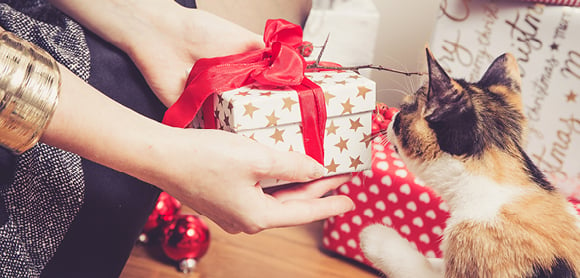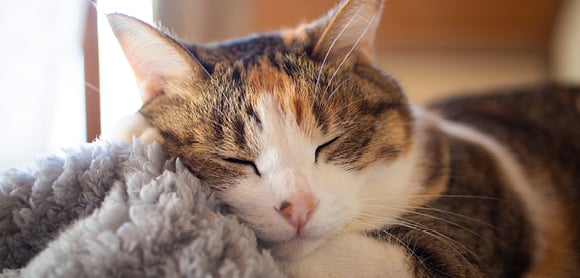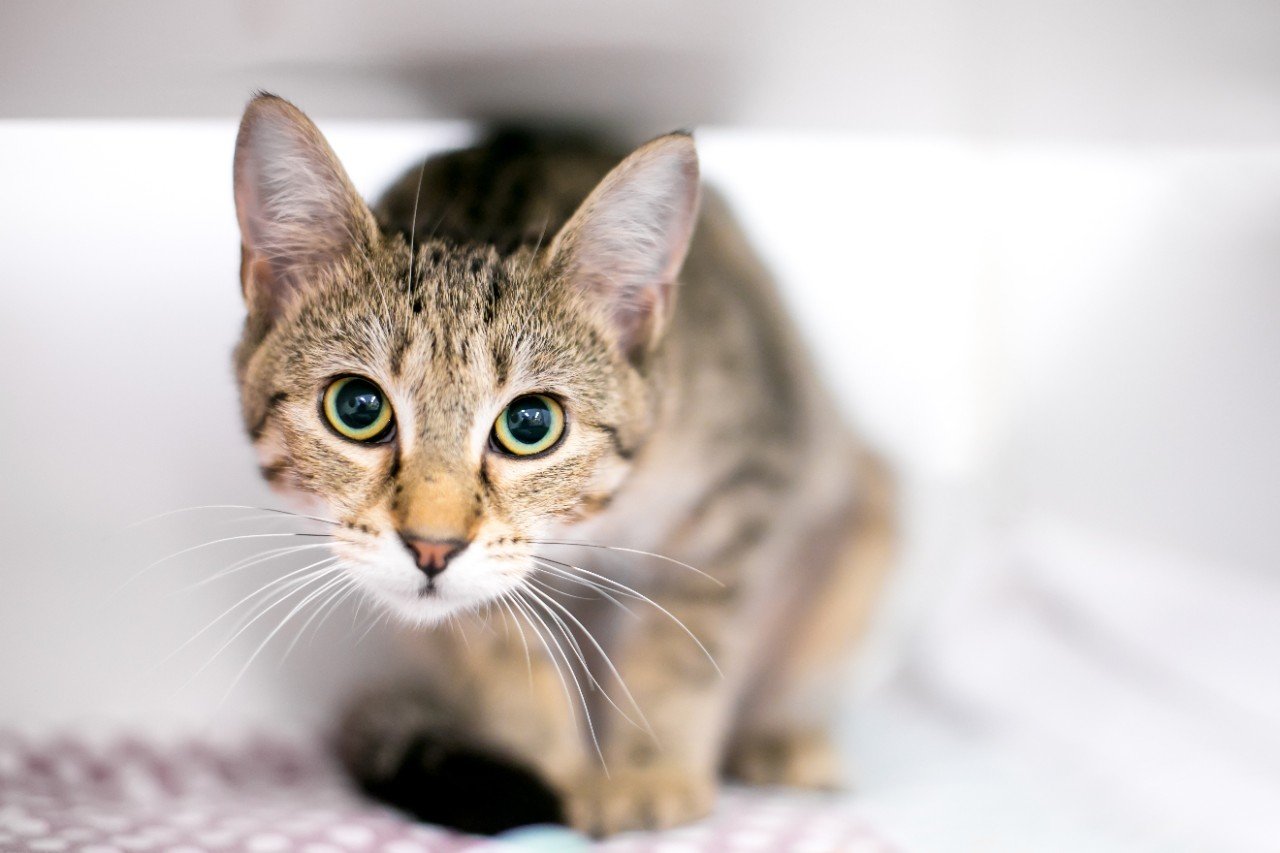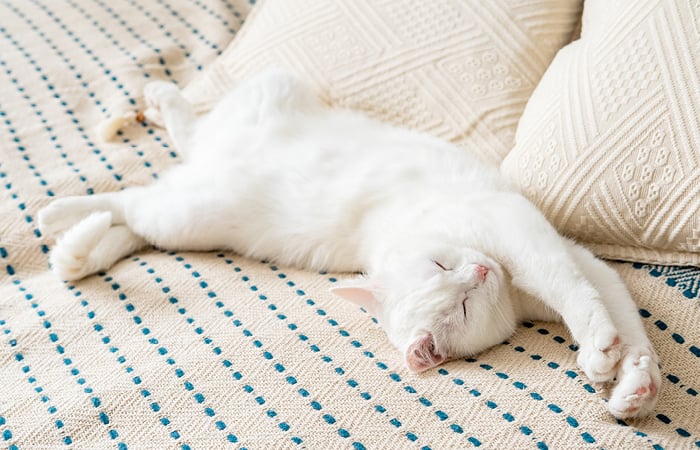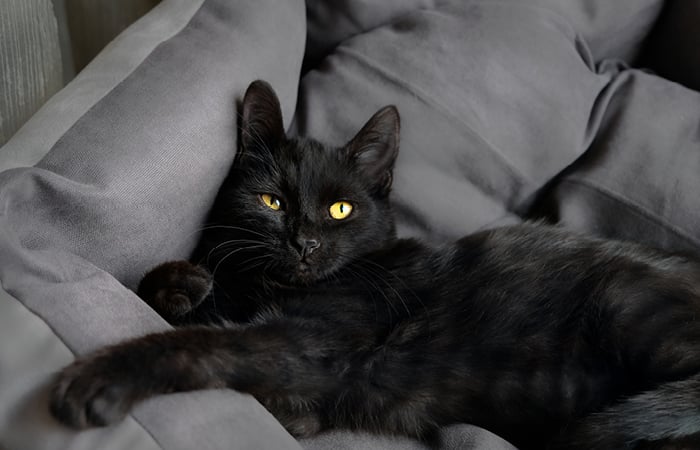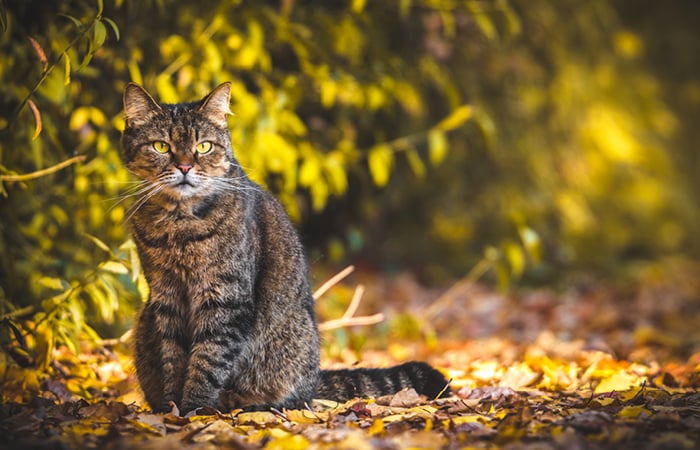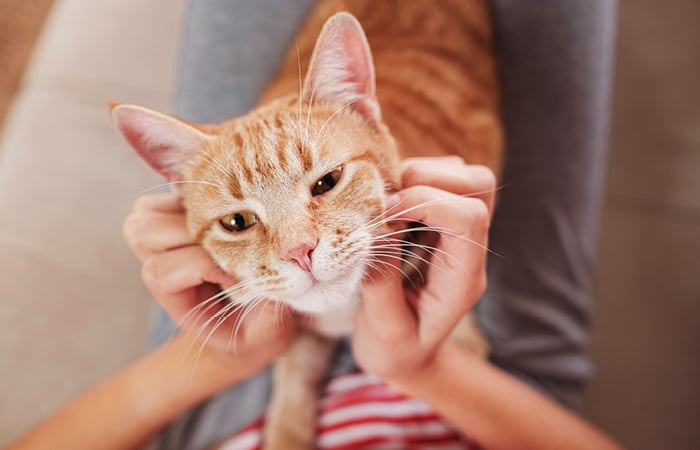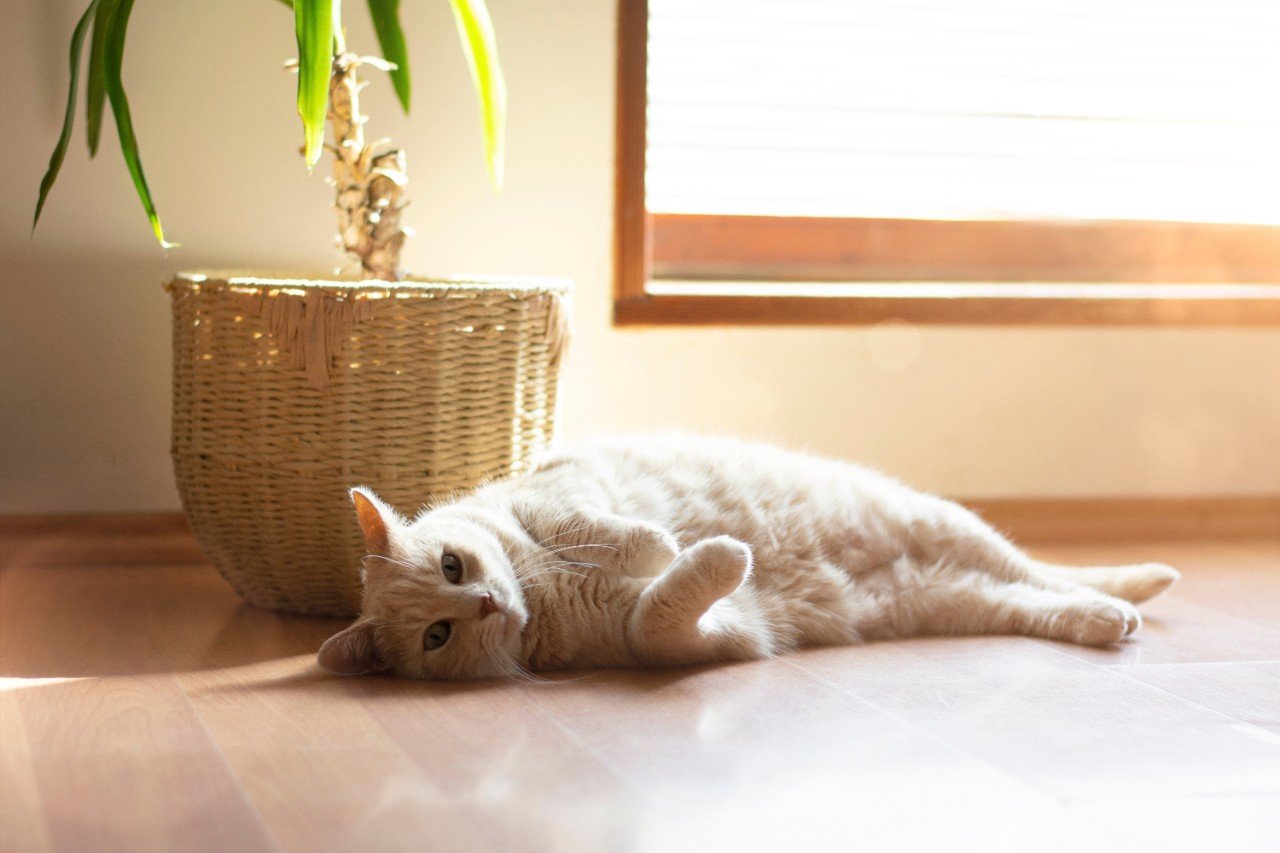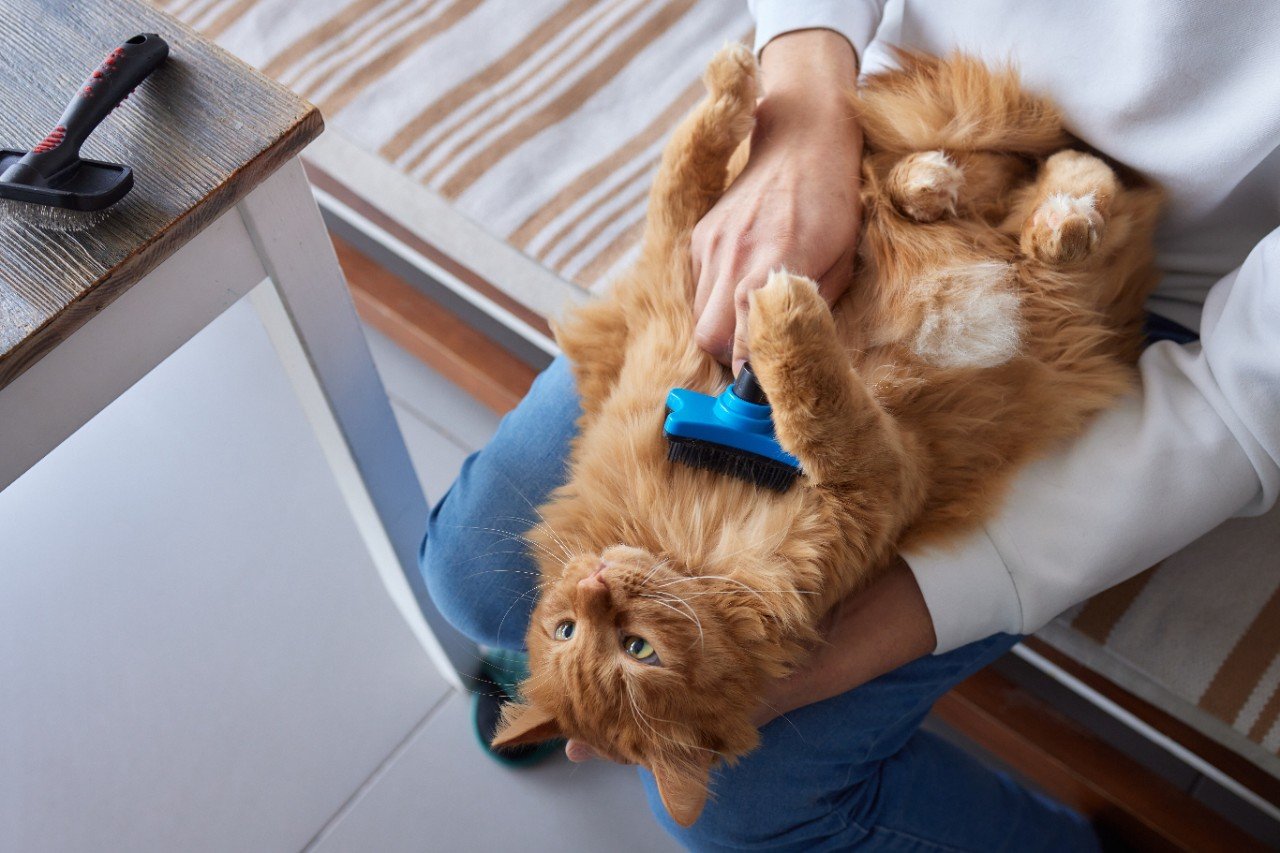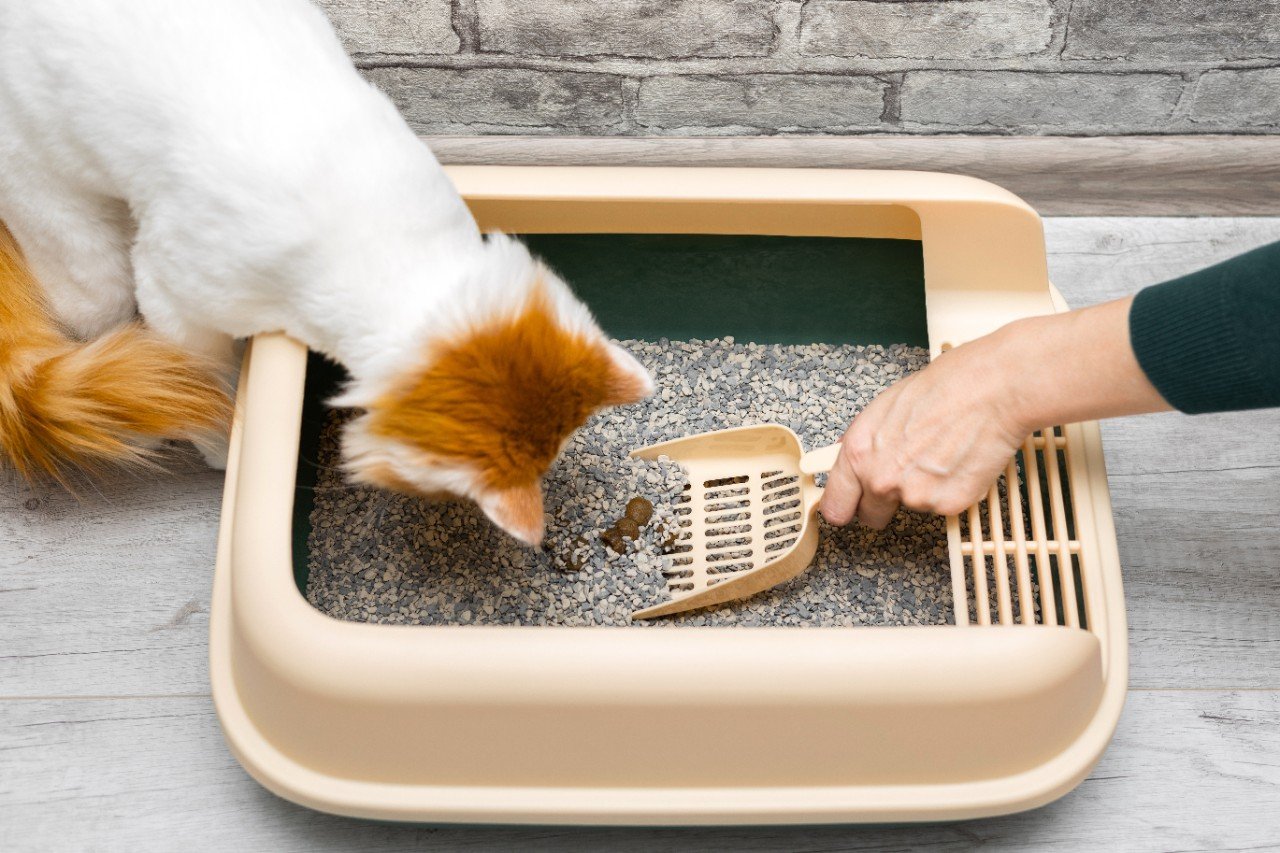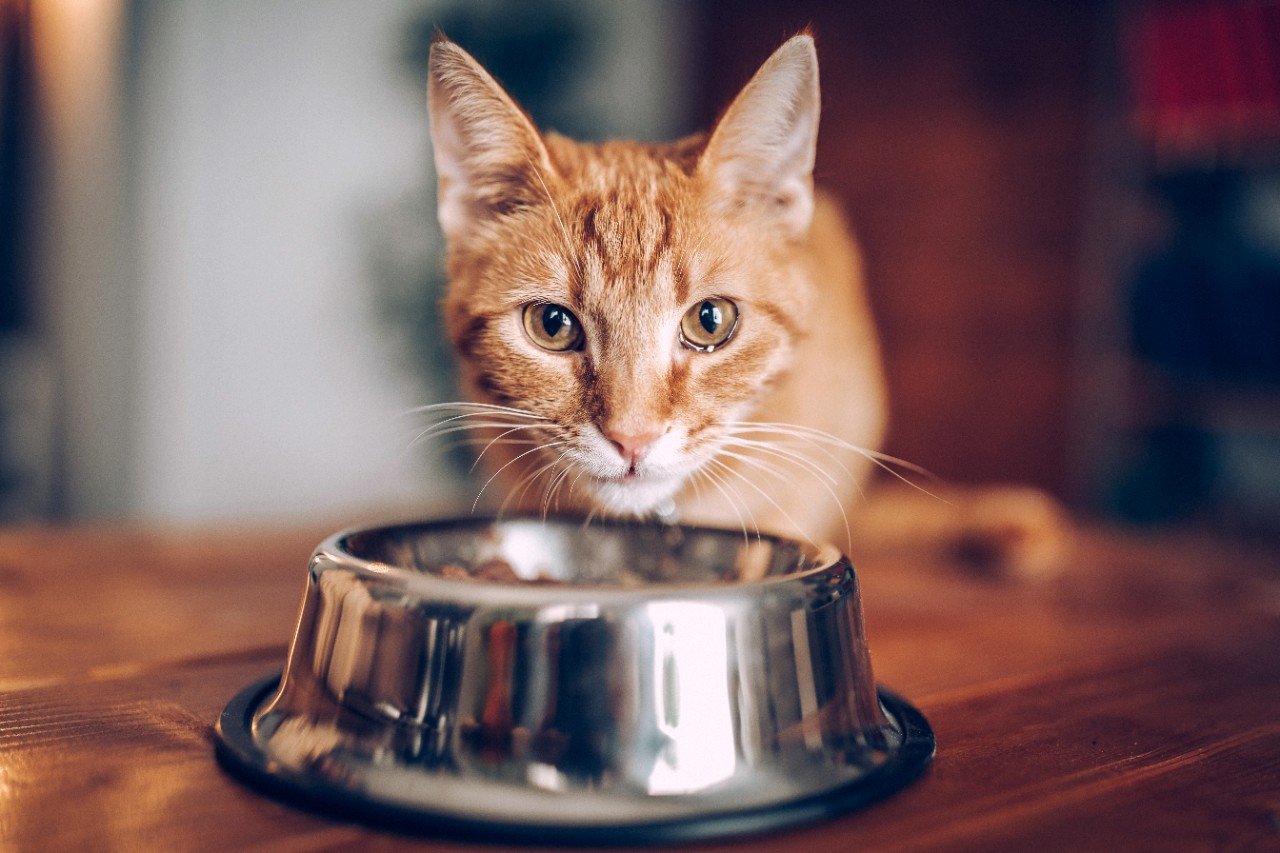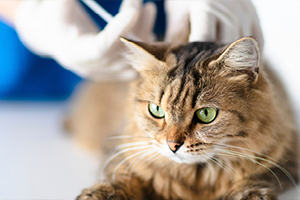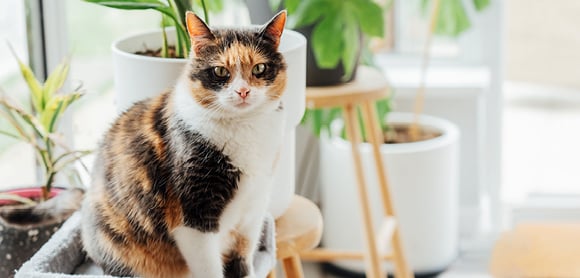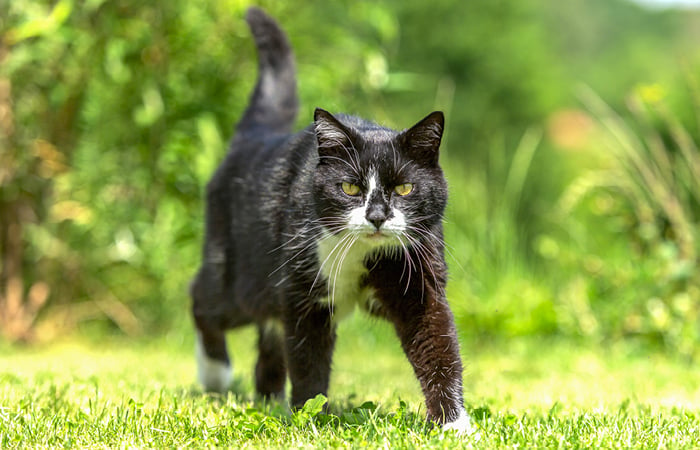A guide to choosing kitten-safe toys
Quick Links
What are the best toys for kittens?
Toys for pouncing
Toys that move along the ground, such as balls and toy mice, are perfect for practising stalking and pouncing. Put the toy in a big box to keep a kitten busy without losing their plaything under the furniture.
Laser pointers are popular for pouncing play, but they don’t give cats the same endorphin rush as catching pretend prey and can cause frustration. If you have a laser pointer, use it sparingly and offer your kitten something satisfying to ‘catch’ at the end of the session.
Fishing rod toys
Kick-bag toys
Interactive toys
Climbing toys
Kittens are keen climbers. As well as being great exercise and good practice for life in the outside world, getting up high gives them a great view which helps them feel safe and secure.
Pet stores sell elaborate cat trees and climbing platforms, but if you don’t have the space or money for one of these you can help your kitten climb by making space on windowsills and bookshelves.
Hiding toys
Feeding enrichment toys
Scratching toys
Teething toys
Can I make kitten toys out of household items?
Homemade kitten toys can be just as much fun as shop-bought ones. Ping-pong, squash and practice golf balls are the perfect size for kittens to chase, and most love scrunched up balls of paper or foil that they can pick up with their teeth or claws.
Some kittens like to use a small soft toy or balled pair of socks as pretend prey. And a cardboard box or big paper bag is irresistible for kitten hide-and-seek.
What kitten toys should I avoid?
Avoid toys with small parts (such as bead eyes) that could be easily swallowed and anything with sharp edges or points. This includes household objects like paper clips and bag-ties. Batteries can be deadly if swallowed, so shut battery-operated kitten toys safely away when not in use.
Although cartoon kittens often chase balls of wool, it’s best to keep them away from yarn, string and ribbons in real life as these can cause intestinal blockages or pose a strangulation hazard. Keep rubber bands and hair elastics out of reach too.
Don’t bother with catnip toys until your kitten is older. Cats tend not to react to catnip until they are three to six months old, and even then around 20% to 30% of adult cats aren’t sensitive to it.
And finally, your fingers, toes and hair definitely don’t make the best kitten toys. It might seem cute to have a tiny kitten gnawing your fingers and pouncing on your feet, but it’s no fun once their teeth and claws are fully grown and you can’t break the habit!
Petplan is a trading name of Pet Plan Limited (Registered in England No. 1282939) and Allianz Insurance plc (Registered in England No. 84638), Registered office: 57 Ladymead, Guildford, Surrey GU1 1DB.
Pet Plan Limited is authorised and regulated by the Financial Conduct Authority. Financial Services Register No. 311969. Allianz Insurance plc is authorised by the Prudential Regulation Authority and regulated by the Financial Conduct Authority and the Prudential Regulation Authority. Financial Services Register No. 121849. Pet Plan Limited is a subsidiary of Allianz Insurance plc.


